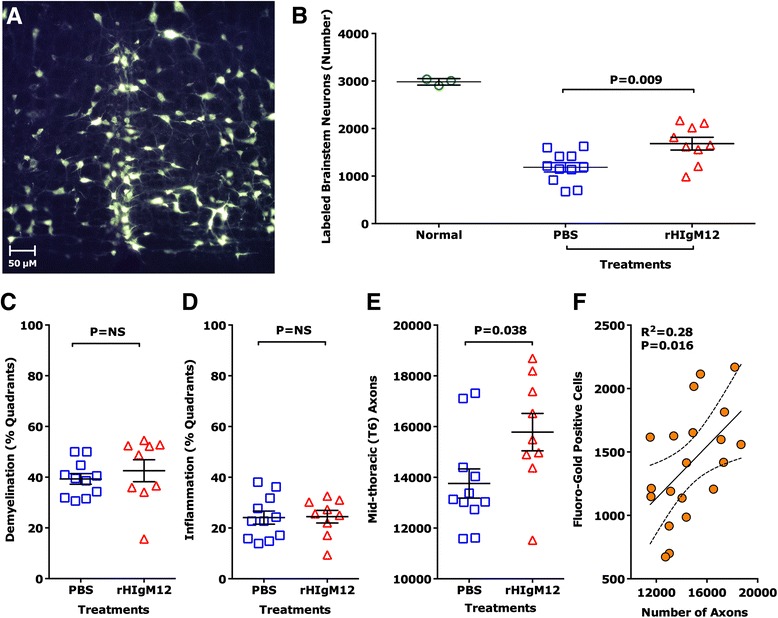Fig. 3.

rHIgM12 treatment improves the number of retrograde-labeled brainstem neurons and preserves spinal cord axons, but does not affect spinal cord demyelination. a Fluoro-Gold-labeled neurons were counted in brain stem sections. The panel shows an example of a cluster of fluorescently labeled neurons in the brainstem. Extensive labeling of cell bodies as well as axons and dendrites can be easily appreciated. b rHIgM12 treatment increased the number of retrograde-labeled brainstem neurons compared to the saline-treated group (p = 0.009, Mann-Whitney rank sum test). The number of labeled neurons in uninfected positive control mice (N = 3, circles) is shown for reference. Forest plots show the average number of retrograde-labeled brainstem neurons ± SEM per treatment group: rHIgM12 (red triangles) and saline (blue boxes). Mice from both treatment groups had similar levels of spinal cord c demyelination and d inflammation pathology. Pathology analysis was performed blinded. e When the number of myelinated mid-thoracic-level spinal cord axons was compared between treatment groups, rHIgM12-treated mice contained 14.7 % more axons than the saline-treated group (p = 0.038, Mann-Whitney rank sum test). f The number of fluorescent retrograde-labeled brain stem neurons in each mouse correlated positively and significantly with the number of thoracic-level myelinated spinal cord axons (p = 0.016, R 2 = 0.28)
